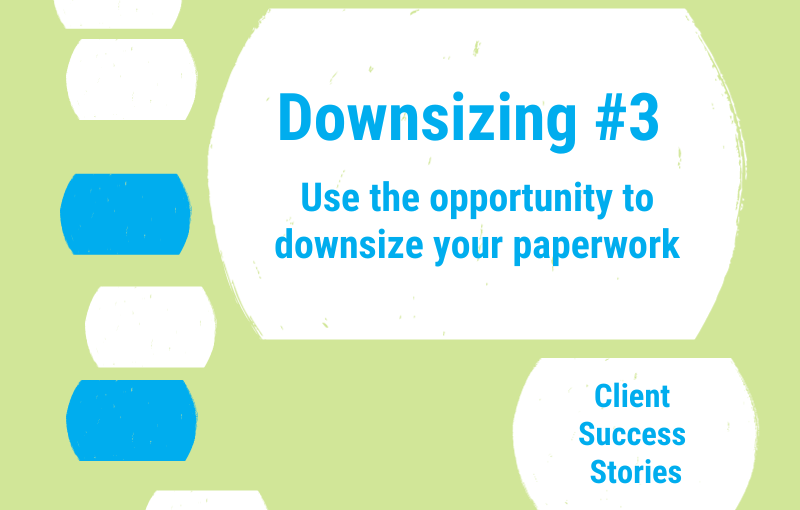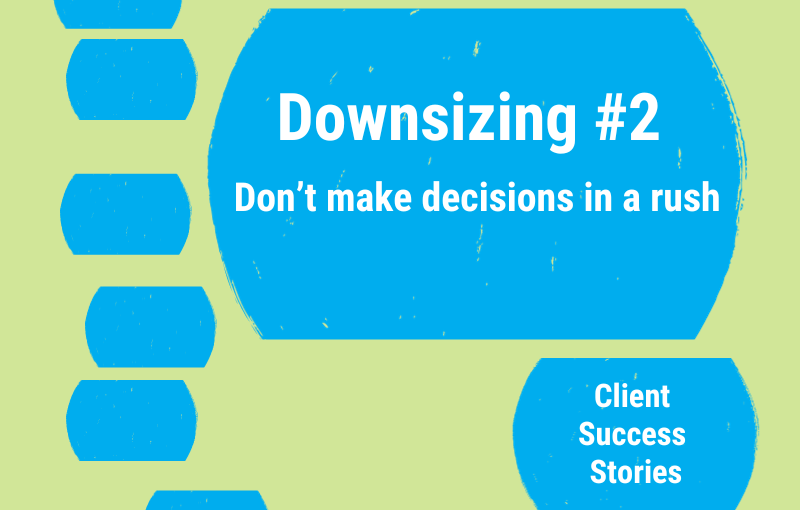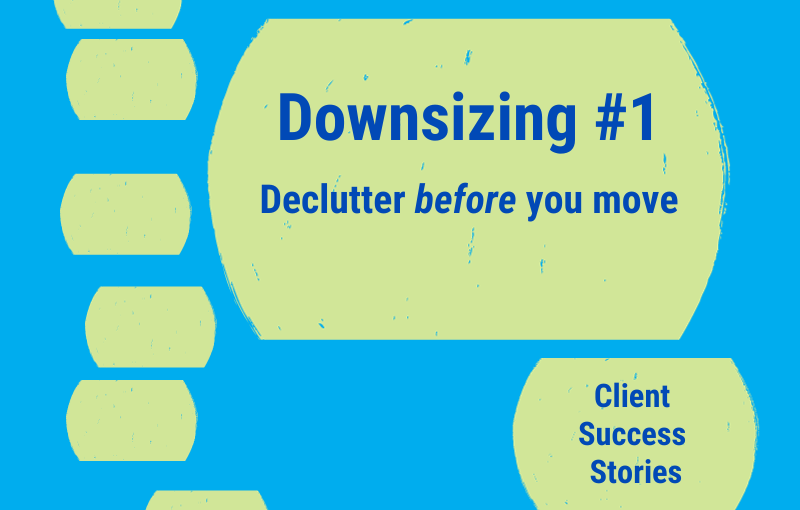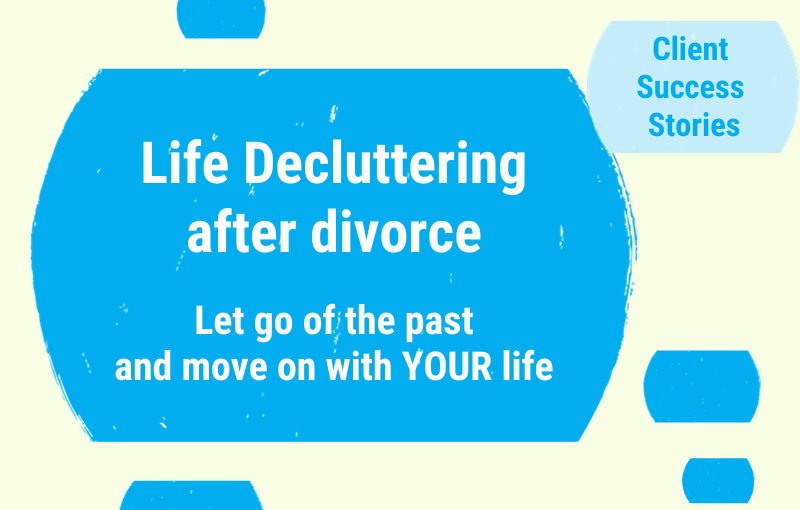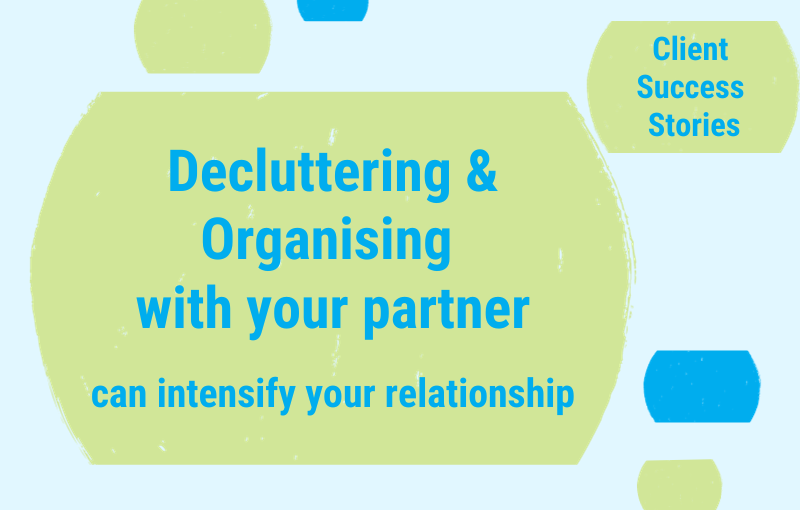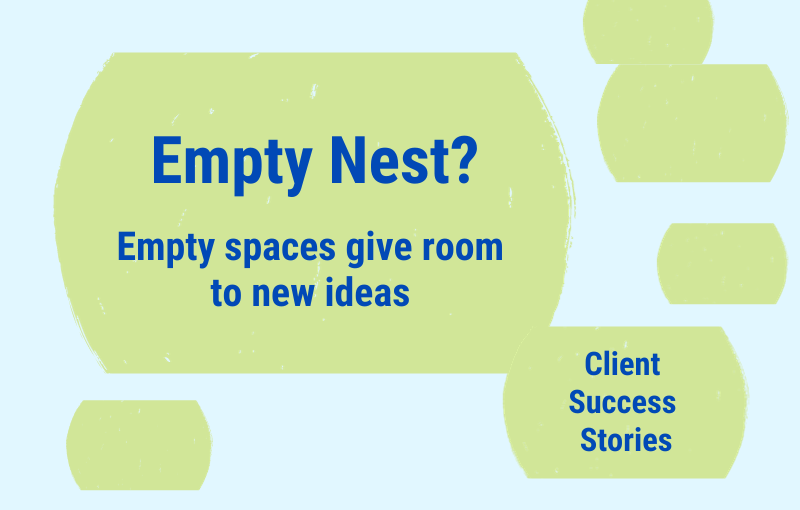Downsizing – moving from a bigger to a smaller place – is a huge life transition.
It’s also a great opportunity to create a simpler and easier paperwork-organising system.
This is the third in a series of 3 posts.
Read No.1 here: ‘Downsizing – Why we should declutter BEFORE we move’ and here No. 2: ‘Downsizing – Why we shouldn’t rush while making let-go decisions’.
During the next 4 weeks, Ellen made huge steps in her declutter, organise, and change journey.
With the help of her friend, she managed to sort through all her clothes and shoes. She decluttered a lot.
When we met again, she told me that she now was best friends with the people in the charity shops in her area. Four times she had dropped off boxes and bags of well-preserved clothes.
Books were ‘the heroes’ of Ellen’s second success story.
Ellen had invested the time to take each of her more than 220 books in her hands and to make a deliberate ‘keep-or-give-away’ decision. She kept only 25 books!
Luckily, she found new homes for all the books that had to leave: Half of them went into the little library in her retirement village, and the other half she delivered to the local community library.
It had been a good decision not to rush through the decluttering process.
Working slowly through her clothes, books, and other belongings, making hundreds of little ‘yes-or-no’ decisions, had helped Ellen to regain clarity about what she really valued and liked, and what not – or no longer. And she now was perfectly organised: she knew exactly every item she owned and where she could find it.
Taking enough time for the sorting process had also helped Ellen to change her mind about a decision she probably would have regretted later.
Some weeks earlier, when she had felt in such a hurry to sort things out, she had been sure that she no longer loved cooking and entertaining people at her place. She had wanted to discard all her cooking and recipe books, most of her cutlery and crockery, and many of the kitchen appliances.
Now she had changed her mind. She had become friends with some of her new neighbours and wanted to revive her qualities as a host, regularly arranging dinner parties and Sunday breakfasts in her apartment. This was something she really was excited about!
The last decluttering task: The Paperwork
Ellen was not so much excited about her paperwork – this was the last area she still needed a helping hand with.
She said that she had never been a ‘paper-person’ and that this hadn’t been a problem during all the years of her marriage when her husband had taken care of any paperwork.
Since his death 7 years ago, no piece of paper had been filed away in Ellen’s household. Yes, she dutifully opened her mail every day, and she immediately paid the bills, but that was it.
I now understood why she had 21 archive boxes with paperwork from the old house stored in the garage – filled with binders (compiled by her late husband), magazines, journals, photo albums, and masses of loose pieces of paper.
And since her move into the new apartment about 7 weeks ago, Ellen had started to gather a new pile of paperwork, sitting on her kitchen counter.
The paperwork-management system should ‘respect’ the organiser’s personality.
We talked about different approaches to paperwork management but quickly agreed that to make it work for Ellen we had to find a clear and very simple way to get – and keep – the papers organised.
In total, it took us three 4-hour sessions to clear up all the paperwork that had accumulated in Ellen’s life.
We started with the fresh paper pile in the kitchen and all the boxes from the garage which contained the loose papers collected during the past years. Then we continued with the archive boxes – until the very last one was empty.
This was our paper-clearing procedure:
Sitting next to each other at the table, we worked hand-in-hand. I took one piece of paper and passed it to Ellen. She had a look at it and then we made a decision.
Sometimes this took a while because Ellen had a little story to tell about an event or experience related to a paper.
The slow sorting process was actually a kind of ‘therapy’ for Ellen:
By remembering all these stories she deliberately appreciated them one last time and then she felt free to let the piece of paper – and the related memory – go.
Yes, we found a few still important documents but most of the stuff could go. And it did go: We compiled a huge amount of bags for the recycling bin and some smaller bags for the shredder.
A personalised filing system makes it easy to find a home for the documents we have/want to keep.
Finally, we took the pile with the to-keep papers and went through it a last time.
We assigned each piece of paper to a sub-pile on the table, and labelled those with Post-it notes, for example: car (registration, insurance, repairs), utilities (electricity/water, Telstra), legal (passport, birth and death certificates, etc.), financial (tax, paid bills, investments, life insurance), health (insurance, medical records), traveling (bookings, tickets, etc).
In the end, we knew how much storage space we needed and were able to file everything into three binders, using dividers to separate different sections.
We used one thin folder to keep all important contact details (family, friends, estate manager, neighbours, doctors, etc.) in one place.
Ellen’s new paper-flow system consisted of only 3 parts: a ‘Today tray’, a ‘Friday tray’, and the three binders.
This simple system can only work out for Ellen because she is a very disciplined person and hates to postpone any tasks.
This is the workflow plan:
- Every day Ellen gets the mail in and places it in the ‘Today tray’.
- On the same day, always before dinner, she works on her ‘today’ stuff:
- She sorts out anything useless / not interesting and puts it in the recycle bin.
- She completes any to-do tasks such as paying bills, confirming bookings or invitations.
- Then she places the finished paperwork into the ‘Friday tray’.
- Anything she can’t do/finish on that day, she also puts in the ‘Friday tray.
- Every Friday, she sits down and gets the pile in the ‘Friday tray’ done – in most cases just filing the paperwork into the binders.
- At the end of the year, she goes through the three binders and sorts out anything that is no longer relevant.
As I said, this simple system doesn’t work for every household/person but for Ellen it does.
I met her recently at a networking event and she said she has made an incredible personality change: She now is ‘a paper person!

